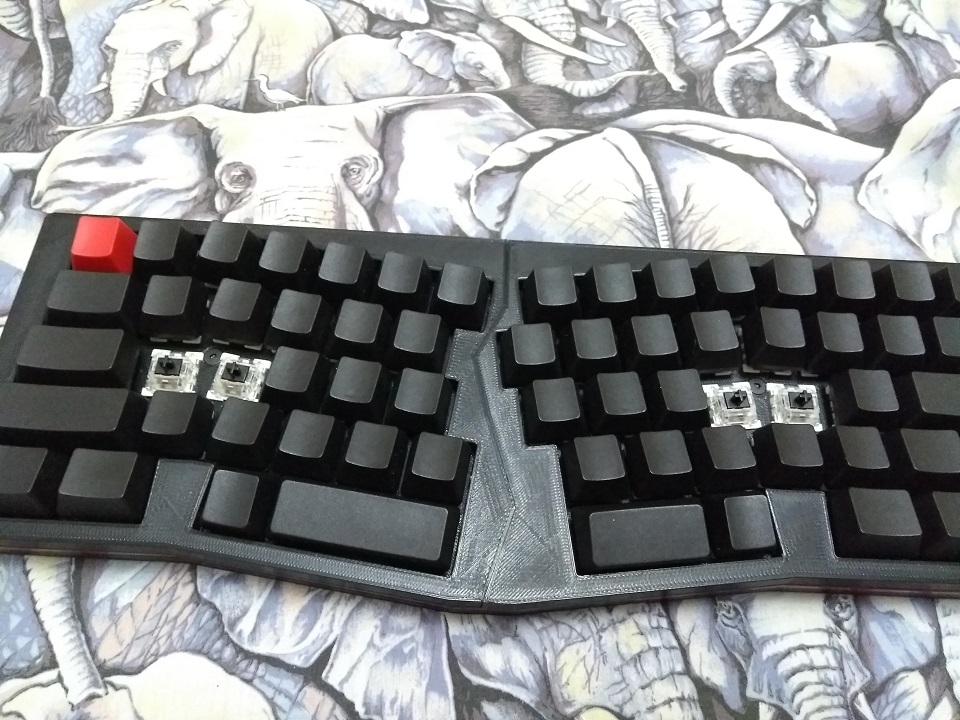Alice-like Keyboard
I made a handwired 60% keyboard based on the TGR Alice.
Description
After seeing this weird, new, cool layout that the Alice had, and then encountering the Prime E, I wanted to try it out. I actually made a handwired Prime E-like clone first (which will be the subject of a future post cause it has its own cool things), and found that the weird stagger and angles actually felt good to type on. After trying out the Prime E-like for a while, I decided that I want it to be my new main keyboard (replacing my year-old handwired Redox).
The keyboard uses Gateron blacks that I spring swapped with 80g ones. At first, I thought this would be too heavy for regular use, but after using it for a couple of days, it feels really good for me! I like heavy springs apparently.
For this keyboard, I decided to buy some "proper" keycaps for it (i.e. not 3D printed), and went with some cheap blank PBT ones. I also bought a red Escape key to complement the red accent around the keyboard.
Just like my Alpha keyboard, it uses the QMK firmware running on an STM32F103 "Blue Pill" board.
The whole thing is held together using 16 screws -- 14 on the bottom, and 2 on the top.
I should get proper socket screws for the bottom. For now, I just used regular M3×16 screws with the tops spray painted black. The two M3×12 screws used at the top are proper socket screws that have been anodized black.
The slight orange tinge around the red accent is actually because the red accent was printed with orange filament. I have no red filament left, and didn't want to buy an entire spool just for that. Orange filament it is. Then I used red permanent marker and a glossy clear coat to seal it. Looks pretty good! And it turned out a deep, almost blood red.
Layout
I haven't really looked at the Alice layout, but I took inspiration from the Prime E-like layout I made, and the Planck keyboard. I don't know if that's originally where the Lower/Raise layers came from, but that's where I first saw it so...
I don't really know what need I have for basically three Function keys, but it's there. The bottom right one labelled Fn is used for system shortcuts like opening the calculator, or a web browser, or the projector settings in Windows.
Future improvements
The right 2u thumb key is a bit too to the right. I've updated my files already to have it moved 0.5u to the left, but I didn't want to reprint it cause it's useable anyway.
I'd like to implement a red backlight for the keyboard. I even mounted the switches in the correct orientation for that.
Files
The files for the keyboard are available in this repository under the MIT license.






